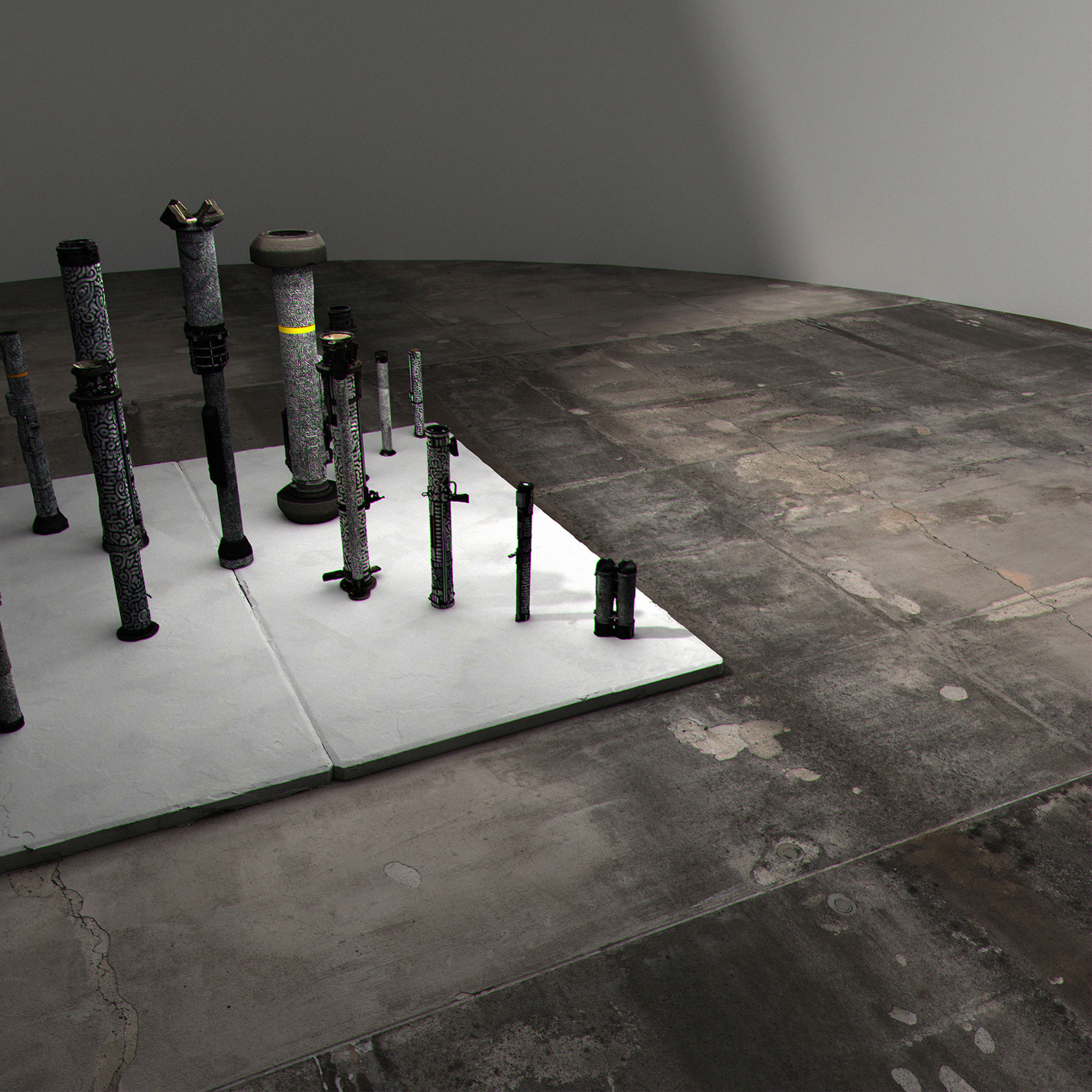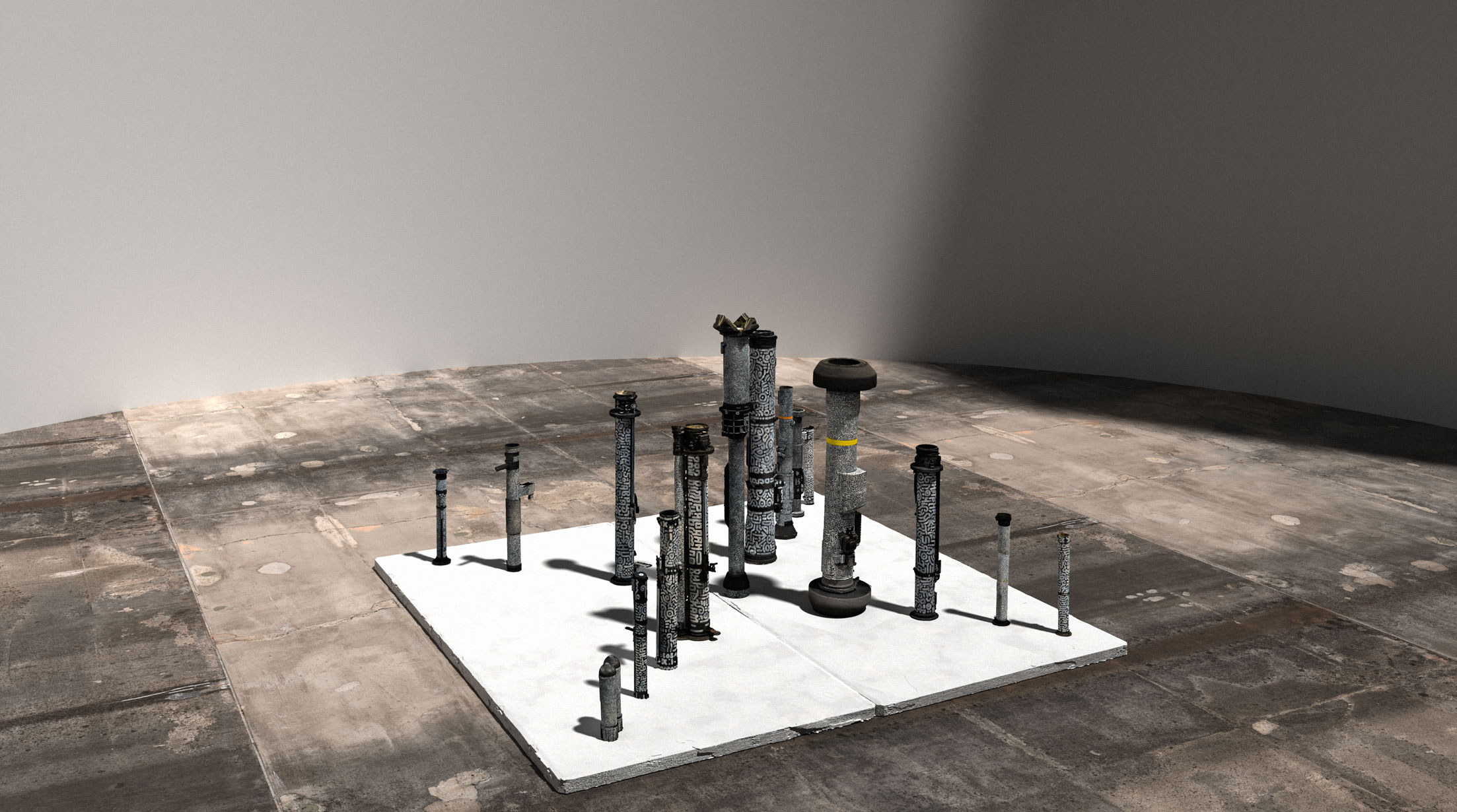Land lease (ongoing)
Material Archive: Conflict,
Loss, and Survival
At the heart of Land Lease is a paradox: weapons—designed to erase—become vessels of remembrance. This ongoing body of work reclaims disabled military vehicles from the Russo-Ukrainian war, transforming them into monuments of resistance, not aggression. Each object, stripped of camouflage and identity, is reworked into a blackened relic—its surface overtaken by intricate white patterning. Violence is not erased, but reframed. The result is a brutal poetry of form and function, history and reinvention.
The title recalls the U.S. Lend-Lease Act of WWII, through which weapons were shipped abroad to combat fascism. Today, in the shadow of Putin’s imperial ambitions, the phrase carries darker meaning. Ukraine is treated not as a sovereign nation, but as territory on loan—its land, culture, and autonomy rendered provisional. If war is the means of erasure, Land Lease is its refusal.
The works were collected and transformed by Ukrainian artist Maxim Kilderov, whose hometown of Nova Kakhovka fell under Russian occupation. Known for his calligraphic style, Kilderov was later commissioned to paint the civilian train into liberated Kherson—a moment captured by The New York Times.
Land Lease is an archive of loss and resilience. It holds within it the past—fragments from American, British, German, Swedish, Spanish, Bulgarian, Russian, Ukrainian, and Soviet arsenals. It confronts the present—occupation, improvisation, survival. And it gestures toward the future: where even the most violent materials may be disarmed and reimagined.

Land is not borrowed.
It is lived, fought for, and reclaimed.

















Land Lease, 2022-(ongoing)
Maxim Kilderov, Ukrainian.
Acrylic, marker on disabled weapons (fiberglass,
plastic, metal), dimensions variable.